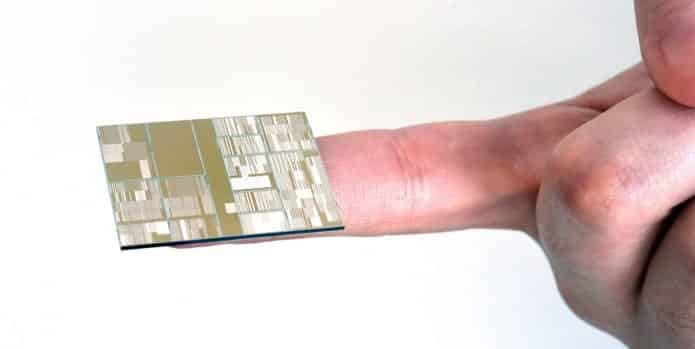It cost IBM $3 billion in research and 10 breakthroughs to make world’s first 7-nanometer chips
Thanks to advances in its chip technology, IBM says it has manufactured the world’s first 7nm (nanometer) chip, arriving well ahead of competitors. This means that the minuscule electronics are so tiny that transistors on the chips are only 7 billionth of a meter in length, which makes it 1,400 times smaller than a human hair.
According to IBM, this latest milestone is the result of a five year investment of $3 billion in chip research and development that the company announced last year. The development provides a ray of light over the shadowed semiconductor industry, which has strived to maintain its legendary pace of doubling transistor density every two years.
Based on IBM’s research innovations, it says that its systems business will persist to use the most advanced semiconductors. However, those chips will now probably be manufactured by GlobalFoundries.
While the chip makers are now manufacturing 14nm processors, the next big project for Intel and other chip makers has been the 10nm chip. In its announcement today, IBM has turned the chip industry’s development path upside down.
Richard Doherty, research director of Envisioneering, a technology assessment and market research firm said “A 7nm chip will hold about four times as many transistors in the same area as a 14nm chip.” In terms of chip development, IBM has “moved the field goal out,” he said.
“For IBM to conquer 7nm without stopping at the 10nm that Intel is supposedly tackling, means that IBM has secured the future two steps out,” Doherty said.
To design its 7mn test chips with functional transistors, IBM made “fundamental changes” in the materials used to design the chip as well as accepting new lithography techniques, said Mukesh Khare, vice president of semiconductor technology for IBM Research, in an interview.
Today’s best chips, such as microprocessors that power our desktops and laptops, use 22-nanometer and 14-nanometer technology. The next manufacturing technology to arrive will be 10-nanometer production, and 7-nanometer chips will arrive after that.
IBM said the 7-nanometer breakthrough was made possible through its five year investment in chip technology and its partnership with New York state, its development alliance with GlobalFoundries, its partnerships with Samsung and chip manufacturing equipment suppliers, and IBM researchers based at SUNY Poly’s NanoTech Complex in Albany, N.Y.
IBM said that 7-nanometer chips will push the limits of technology to meet the demands of big data, mobile products, cloud computing, and cognitive computing.
“IBM research is making sure that smaller transistors and scaling can continue,” Khare said. “We want to make sure that high performance computing needs for IBM systems can be met for a very long time.” IBM did not reveal its schedule for commercial development, but said it is pushing the limits of technology “beyond” 7nm.
Moore’s Law reliably estimated the doubling of transistors on a chip every two years for the last 50 years. But as chip sizes arrive at the limits of physics, production costs have increased, and chip makers have been on the look out for new technologies to keep make progress in computing performance.
IBM said that manufacturing a feasible 7-nanometer node technology has been one of the biggest challenges of the semiconductor industry. Following such small dimensions through conventional processes has reduced the chip performance in quality and nullified the anticipated benefits of scaling or contracting chips to get higher performance, lower cost and lower power requirements.
IBM said researchers feared that due to fundamental barriers of technology, 7-nanometer chips would be out of reach. However, IBM said it used new semiconductor techniques and processes developed by IBM Research. It gained advantage from past innovations such as silicon germanium (SiGe), channel transistors, and Extreme Ultraviolet (EUV) lithography integration at multiple levels. Those innovations helped IBM cut 50 percent of the chip size compared to the best 10-nanometer technology currently available.
Roger Kay, an analyst at Endpoint Technologies said a major issue will be whether IBM can bring its technology to commercial production. For IBM, what follows “is the hard part” because of the price and complications of the equipment required for mass production, he said.
Intel has no detailed plans for 7nm chip but is likely to release a 10nm chip as later this year.
Richard Fichera, an analyst at Forrester, said IBM’s effort does not assure that it will beat Intel to a commercial product. But if IBM persists to stay active in this area and work with its partners, it will have technologies to keep their mainframe technology and Power chips “very competitive.”

